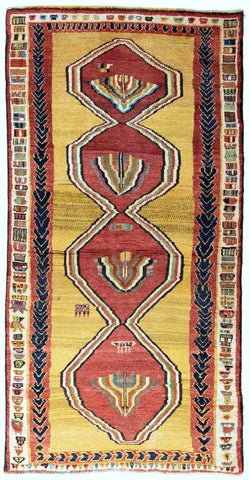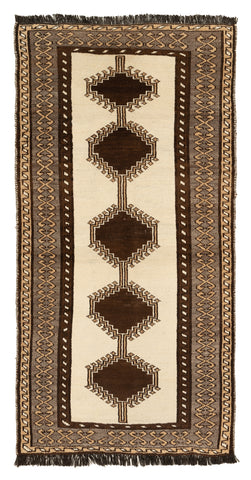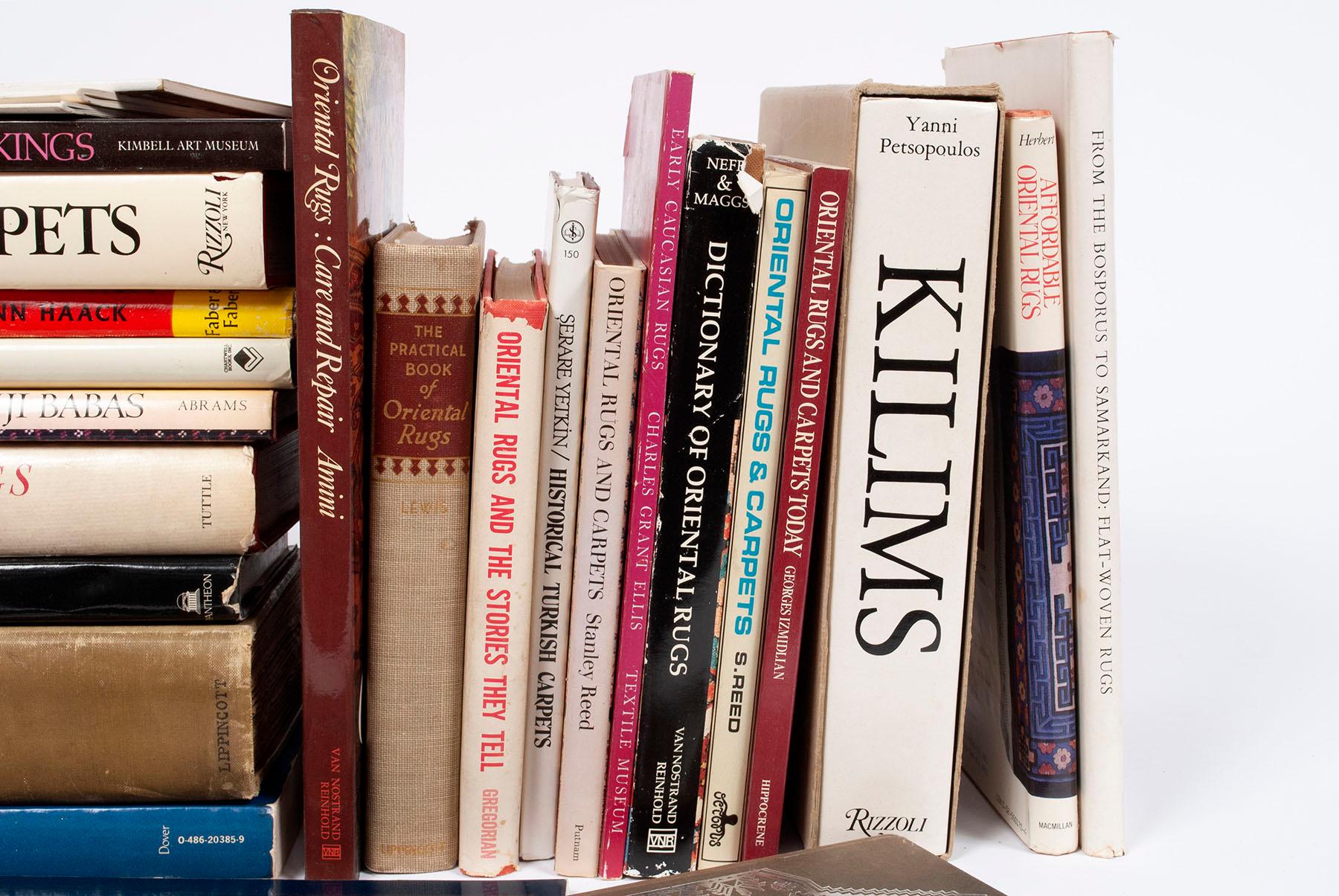Gabbeh rugs, crafted by artisans in the southern region of Persia, blend vibrant colors with a soft texture. These rugs are meticulously woven using wool from local sheep, which is then dyed using natural plant and mineral sources. The intricate patterns on Gabbeh rugs reflect a deep connection to nature and cultural heritage. Beyond their aesthetic appeal, these rugs serve as storytellers, sharing the rich narratives of the skilled craftspeople who bring them to life. For further insights into Gabbeh rugs and their creators, consider exploring our informative blog
Origin and History
No one knows exactly where the name "Gabbeh" comes from, its origins, or why it has become known by this name. Some linguists and writers believe that the word implies something rough, thick, tough, or similar because a "Gabbeh" rug is described as one with a long pile and is coarsely woven.These floor coverings were woven by tribes for personal use. A gabbeh was a rug designed to prevent the cold of the ground from penetrating, thereby protecting the nomadic family from it.
In Iran's history, the word "gabbeh" was first mentioned during a special event for Shah Humayun of the Mughal Empire by Shah Tahmasp of the Safavid dynasty. Shah Humayun had to escape to Iran because of political problems and betrayals in his own land. Shah Tahmasp welcomed him warmly and made sure he felt safe. To prepare for his arrival, they arranged a big celebration. Mohammad Khan Ashraf Oghli, who was in charge of the event, used luxurious decorations for the halls. They laid down gold-woven carpets with two layers, woolen felt rugs with a satin finish, Gabbeh rugs, and three long rugs from Joshqan, each twelve yards long.

"Tahmasp and Humayun at a Nowruz festival"
Design, Knots, and Symbolism
Gabbeh rugs are distinguished by their thick pile and low knot density, which gives them a distinctive plush feel. The designs are simple yet profound, often geometric, and laden with symbolism. Each rug tells a story, whether it’s a depiction of the rugged landscapes, a reflection of the weaver’s emotions, or a tale passed down through generations.
The asymmetry found in Gabbeh rugs is intentional, a testament to the weaver’s personal touch and the storytelling nature of the craft. It’s not uncommon to find figural designs, such as lions adorned with geometric patterns or scenes reminiscent of ancient Persian reliefs, with each element a symbol with its own tale to tell. This spontaneous and personal approach to weaving makes every Gabbeh rug a unique piece of art, setting them apart from other Persian rugs and, indeed, from most other forms of textile art.

Varieties and Authenticity
While traditional Persian Gabbeh rugs are the most renowned, other varieties, such as Indian and modern interpretations, have emerged. However, it’s important to be vigilant against imitations. Knock-offs from countries like Turkey, India, China, and Egypt often use inferior materials and chemical dyes, lacking the authenticity and soul of a true Gabbeh. These replicas can usually be identified by their white cotton fringes, a telltale sign of a non-authentic piece.



Incorporating Gabbeh Rugs in Home Decor
Gabbeh rugs can infuse any space with warmth and storytelling charm. Their vibrant colors and expressive designs make them versatile pieces for home decor. They can serve as the centerpiece in a living room, add coziness to a bedroom, or even inspire a color scheme throughout the house. When placing a Gabbeh rug, consider the narrative it brings and let it speak to the space, creating a conversation between tradition and modern living.
Discover the diverse range of Gabbeh rugs, featuring both traditional geometric patterns and contemporary designs. Perfect for any setting, our collection showcases the fine craftsmanship of Gabbeh weavers. View our selection and find the perfect rug to complement your home’s decor.















































Leave a comment